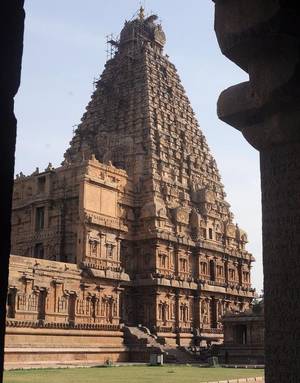An Italian adventurer, who travelled to India for travel’s sake, has a good claim
Ever since Charles Allen, writer and historian, can remember, he has been immersing himself in India’s “muddy waters, getting her dust between my toes.” Returning to the country of his birth time and again, he has made pilgrimages to Kedarnath and Badrinath, visited “thousands of Hindu mandirs and kovils, Jain bastis, Sikh gurdwaras and Buddhist stupas…” and written on India for 40 years. But, as he says in the introduction to Coromandel: A Personal History of South India, “…the fact is that I know far more about North India than I do about the South, which is partly why I set myself the task of researching and writing this book, which concentrates on the country south of the Narmada…” The greatest difference between North and South — ‘Arya’ and ‘Dravida’, ‘wheat’ and ‘rice’, ‘alluvial’ and ‘volcano’ — is language, he writes. An excerpt:
The word Coromandel makes its first appearance on Portuguese maps at the start of the sixteenth century. It was then picked up in quick succession by the Dutch, the French, the Danes and the English. Like so many Indian words that crept into the English language from late-Elizabethan times onwards, it is a corruption. That quintessential portmanteau of Anglo-Indian words and their derivations Hobson-Jobson has this to say about it:
Coromandel, n.p. A name which has been long applied by Europeans to the Northern Tamil Country, or (more comprehensively) to the eastern coast of the Peninsula of India from Point Calimere to the mouth of the Kistna, sometimes to Orissa… The name is in fact Choramandala, the Realm of Chora; this being the Tamil form of the very ancient title of the Tamil Kings who reigned at Tanjore… The name occurs in the forms Cholamandalam or Solamandalam on the great temple inscription of Tanjore.
So Coromandel takes its name from the ancient dynasty of Tamil rulers known as the Cholas. That word ‘Chola’ first appears on rock inscriptions that can be accurately dated to within a year or two either side of 260 BCE, carved by order of Emperor Ashoka, and it continues to reappear century after century on the walls and monuments of the great temple cities of Tamil country, right up to a final appearance in the year 1279 CE.
The adventures of Ludovico
As to who first coined the word Coromandel, a young Italian adventurer from Bologna named Ludovico di Varthema has a good claim. If Ludovico is remembered at all today it is because he was the first non-Muslim European to visit Mecca, and to live to tell the tale. However, what makes Ludovico and his Itinerario — first published in Rome in 1510 and subsequently in English in 1577 — special and so unusual for the time is that the author’s main concern was not to enrich himself through trading in spices or slaves, or to boast about slaying idolators or saving their souls for Christ. He travelled for travel’s sake, filled, in his own words, with ‘a desire to behold the various kingdoms of the world… with my own eyes.’
When Ludovico di Varthema’s Itinerario was published in Rome in 1510 every copy was snapped up. Up to that point the Portuguese had successfully guarded the trade secrets of their navigation in the Indies. Thanks in part to Ludovico’s descriptions of India’s eastern seaboard, the coast of Coromandel now became a target for Portugal’s maritime rivals: the Dutch, Danes, French and English. It was the Dutch, through the Vereenigde Oost-Indische Compagnie (VOC), or the Dutch East Indies Company, who went on to show the Portuguese how to trade without scruples. In 1609 they captured the Portuguese fort at Pulicat, which stands at the mouth of the Pulicat lagoon, today a placid bird sanctuary.
Pulicat subsequently became the headquarters of the VOC for its trading operations up and down the Coromandel coast, with slaving as a sideline. Between 1621 and 1665, VOC ships transported 38,441 slaves from the Coromandel coast, chiefly through Pulicat, for sale to Dutch plantations in Batavia, an activity done with the connivance of local rulers and helped along by several local famines. By such means the VOC became the wealthiest private company the world had ever seen, paying 40 per cent dividends to its shareholders in Amsterdam — which may help to explain why the Dutch named their fort at Pulicat Guelderland.
Shift to Nagapattinam
In 1690 the VOC shifted its Coromandel headquarters from Pulicat to Nagapattinam, which remained under the control of the VOC until 1781, when it fell to the East India Company (EICo) following two sea-battles fought directly offshore between two evenly matched fleets, the British and the French.
When Ludovico stepped ashore at Nagapattinam in 1505 he had unknowingly arrived in what had been the Chola heartland for fifteen hundred years and more. Nagapattinam stands at the mouth of the Kollidam, the southern channel of the Cauvery River, and it was here within this fecund triangle of silt threaded with waterways that the Chola kings established their temple capitals: initially, inland at Uraiyur; then on the coast at Kaveripattinam (today Poompuhar); later still in Thanjavur; and then, as their territories continued to expand, at a new site further north which the ruler of the day named Gangaikondacholapuram — ‘the city of the Chola who took the Ganges’ — which became their fourth and last capital.
source: http://www.thehindu.com / The Hindu / Home> Books / by Charles Allen / December 11th, 2017
